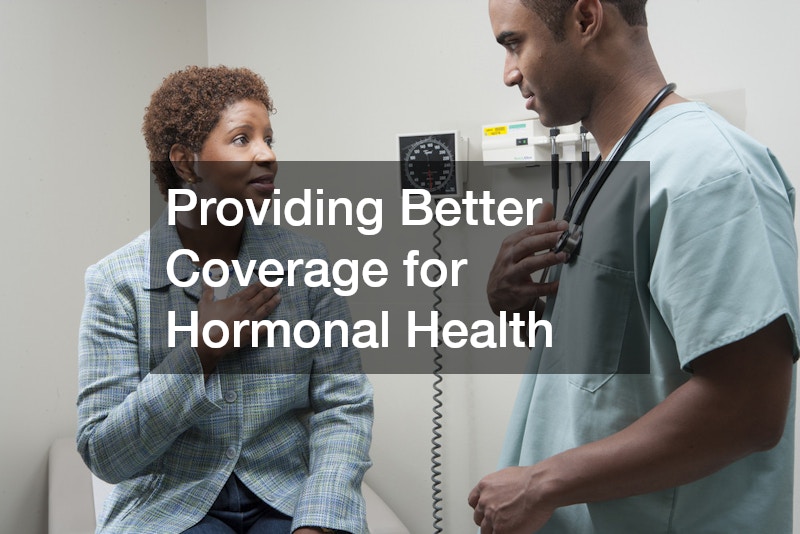In today’s complex healthcare landscape, understanding the nuances of insurance coverage is essential for individuals seeking various types of medical services. The importance of comprehensive health benefits that address a wide range of needs. From IV therapy services to end-of-life care and family planning, accessing better coverage can drastically improve patients’ quality of life and ensure they receive necessary care promptly.
Many individuals are often left in the dark regarding what services their health insurance policies truly provide. The gap between necessary coverage and what is available often leaves patients vulnerable, especially when it comes to specialized care or treatments that are deemed non-essential. By navigating the intricacies of insurance plans, consumers can better advocate for themselves and secure better coverage that meets their health requirements.
This article explores various aspects of better coverage by examining critical areas within the health services spectrum. Each section will delve into specific services and treatments that benefit from improved insurance provisions. Understanding these options empowers individuals to make informed health decisions and promotes a culture of proactive healthcare management.
1. Achieving Better Coverage with Comprehensive Health Services

Comprehensive health services are pivotal in providing better coverage to individuals in need of holistic care. When healthcare systems integrate various services, such as preventive care and specialized treatments, stakeholders experience improved outcomes. A focus on better coverage leads to fewer gaps in care, ensuring that patients receive timely interventions, such as IV therapy services, that can improve their health trajectory.
Patients often struggle to navigate the intricacies of insurance claims regarding comprehensive coverage. By educating patients about available services, healthcare providers can assist them in accessing better coverage tailored to their individual health needs. Surprisingly, many patients are unaware that many insurance policies now encompass services like IV therapy, which can be crucial for hydration, nutrition, and medication administration.
By prioritizing better coverage for comprehensive health services, patients can access a wide array of necessary treatments without incurring excessive out-of-pocket expenses. Lowering these financial barriers not only improves patient compliance but also fosters a healthier community. Ultimately, when health services are integrated and widely accessible, the benefits ripple through society, highlighting the shared responsibility in promoting better health outcomes for all.
2. Providing Quality Care for the Elderly
End-of-life care is a sensitive yet vital aspect of healthcare that requires compassionate planning and support. Families often face overwhelming decisions regarding hospice home options, making it essential to have better coverage for these services. By ensuring care for end-of-life patients, they can spend their remaining days in comfort and dignity while surrounded by loved ones.
Access to quality hospice services can significantly enhance the quality of life for terminally ill patients. Medicare and numerous insurance plans offer benefits that cover hospice care, but patients may not fully understand or utilize their options. By advocating for better coverage, healthcare providers can ensure families receive the necessary information to make informed choices during challenging times.
Additionally, organizations must continuously strive for improvements in coverage policies to meet the evolving needs of patients and families facing end-of-life decisions. Identifying gaps and areas of improvement can pave the way for better coverage that not only provides physical care but also emotional and spiritual support. Ultimately, the commitment to the person in end-of-life care allows individuals to leave behind a legacy of love and dignity.
3. Exploring Family Planning Needs
Family planning is an integral component of reproductive healthcare that requires coverage for comprehensive access. Many insurance plans still inadequately address the needs associated with family planning, resulting in barriers for those seeking services like surrogate pregnancy. By advocating for better coverage, health organizations can support families in making informed reproductive choices without excessive financial burden.
Access to family planning services decreases unplanned pregnancies and supports healthier families, emphasizing the need for robust insurance policies. Current coverage often fails to meet the demands of modern family planning, which can include both fertility treatments and surrogacy options. Addressing these coverage gaps not only benefits individuals but also contributes to community health by empowering families to plan their futures confidently.
Encouraging better coverage in family planning also involves educating patients about their rights and the available services under their insurance plans. Improved communication between healthcare providers and patients can lead to increased utilization of beneficial services. By fostering a culture of transparency, we can advance community health initiatives focused on family planning and reproductive rights.
4. Enhancing Personal Care with Better Coverage in Hair Treatments

Personal care extends to aesthetic treatments such as hair treatments and restoration services. Individuals often seek solutions for hair loss and scalp problems, but may hesitate due to the perception that such services are not covered by insurance. However, there are emerging policies that provide better coverage, making treatments by hair specialists more accessible.
Hair treatments can significantly boost confidence and improve psychological well-being, underlining the importance of incorporating these services into comprehensive health insurance plans. Patients benefit from better coverage when they are aware of the possibility of receiving reimbursement for procedures like scalp micropigmentation and hair restoration therapies. Advocating for these inclusions encourages a broader acceptance of personal care in the overall healthcare discourse.
The movement toward better coverage for personal care treatments demonstrates an evolving understanding of health that encompasses physical, emotional, and aesthetic needs. As the discussion on what constitutes healthcare expands, it is essential to advocate for policies that recognize and cover diverse aspects of health. This shift can lead to improved well-being and satisfaction among patients seeking hair treatments and restoration services.
5. Securing Quality Health Monitoring
Health monitoring is critical for managing chronic conditions, but many patients lack adequate coverage for essential testing supplies and services. For instance, diabetic test strips are vital for individuals living with diabetes but can be prohibitively expensive without proper insurance coverage. By ensuring better coverage for such necessities, we can help individuals manage their conditions more effectively.
Health plans that adequately cover supplies for conditions like diabetes lead to better patient outcomes and reduced long-term costs for healthcare systems. Patients who can secure better coverage for diabetic monitoring equipment are more likely to engage in self-management practices, leading to fewer hospitalizations and emergency visits. This proactive approach reinforces the importance of comprehensive insurance plans that include necessary health monitoring provisions.
Moreover, ongoing education about available coverage options is crucial for patients to fully utilize their benefits. Empowering patients to advocate for better coverage ensures that their healthcare needs are met without financial strain. By prioritizing such policies, we create a more responsive healthcare environment that accommodates the needs of individuals seeking health monitoring solutions.
6. Ensuring Accessible Medical Attention
Accessible medical attention is fundamental for maintaining overall health, yet it often goes unrecognized in insurance policies. Urgent care facilities play a vital role in addressing acute health issues swiftly, but fear of limited coverage can deter patients from seeking necessary care. By promoting better coverage for urgent care, we can encourage individuals to utilize these resources without worry.
The convenience of urgent care services alleviates the burden on emergency rooms and enhances access to timely medical attention. Patients benefit from affordable care that addresses non-life-threatening conditions swiftly, often resulting in better health outcomes. Ensuring that insurance plans adequately cover urgent care services is essential for fostering a healthier community overall.
Furthermore, as healthcare demand continues to grow, insurance companies must adapt their offerings. Integrating better coverage for accessible medical attention not only serves patients but also streamlines healthcare systems. By recognizing the necessity of urgent care in holistic healthcare planning, we can promote a more efficient and patient-centered approach to health services.
7. Achieving Better Coverage for Aesthetic Treatments

Aesthetic treatments have become increasingly sought after, as individuals prioritize self-image and health. However, coverage for these services often remains sparse, leaving individuals to bear the financial brunt of treatments like cheek fillers. Advocating for better coverage in aesthetic care reflects evolving societal values regarding health and personal grooming.
Insurance providers are beginning to acknowledge the psychological benefits of aesthetic treatments, prompting movements towards better coverage. As research continues to highlight the links between self-esteem and appearance, the justification for including these services in insurance plans becomes clearer. This expanded view encourages a shift from traditional healthcare paradigms to include comprehensive aesthetic care coverage.
Moreover, patients deserve to have access to a variety of treatment options that enhance their quality of life. As we strive for excellence in aesthetic treatments, the dialogue surrounding these services must expand to encompass their broad benefits. This inclusivity ultimately promotes a more holistic view of health that respects individual choices and preferences.
8. Promoting Oral Health
Oral health is a crucial component of overall well-being, yet many insurance plans barely cover dental needs. Better coverage for oral health services, particularly from orthodontists, is essential for ensuring individuals maintain proper dental hygiene and aesthetics. This is particularly critical for children and adolescents who may require braces or other orthodontic interventions.
Access to orthodontic services allows for timely interventions that can prevent more serious complications later in life. Patients benefit immensely from quality coverage, enabling them to receive necessary treatments without financial strain. A commitment to improving oral health coverage enhances both smiles and overall health in a population that has often neglected this important aspect.
Furthermore, addressing oral health must be part of broader discussions on health insurance reforms. By recognizing the correlation between oral and overall health, policymakers can advocate for changes that include better coverage for essential dental services. Such reforms would empower individuals to prioritize their oral care without fearing the associated economic burden.
9. Offering Pain Relief and Mobility for Everyone
Pain management and mobility enhancement are critical aspects of healthcare that often require specialized treatment. Individuals seeking services from chiropractor offices frequently face challenges associated with limited coverage under traditional insurance plans. Increased desire for these treatments is essential to help patients manage pain effectively and improve their mobility.
Chiropractic care is effective in treating various conditions related to muscle and joint pain, making it a valuable resource for those in need. Unfortunately, variations in coverage often leave patients unable to access the care they require. By advocating for better coverage for chiropractic services, we can help individuals reclaim their mobility and quality of life.
Moreover, studies have suggested that comprehensive pain management strategies can significantly reduce long-term healthcare costs by preventing more severe health issues down the line. Coverage in this area promotes proactive health management and aids in the rehabilitation process for countless individuals. Acknowledging the importance of pain relief underscores the necessity of including such services under universal healthcare discussions.
10. Providing Better Coverage for Hormonal Health

Hormonal health often gets overlooked in mainstream healthcare discussions, yet it is critical for overall well-being. Treatments related to hormonal health, such as testosterone optimization, are essential for those experiencing hormonal imbalances. Securing better coverage for these treatments is vital to assist individuals in regaining balance and improving their quality of life.
Access to hormone therapies can dramatically enhance physical and mental health, enabling patients to lead more fulfilling lives. Without adequate coverage, individuals may feel discouraged from pursuing treatments that could offer significant benefits. Advocating for better coverage in this area supports a broader understanding of health that encompasses both physical and emotional dimensions.
Efforts to include hormonal health treatments in insurance plans reflect the growing recognition of their importance to overall wellness. By prioritizing these services, we can empower patients to make informed choices regarding their health. Collective action toward securing comprehensive coverage for hormonal health reinforces the correlation between mental and physical health, leading to a healthier society.
The interconnectedness of health and insurance can unlock potential improvements in community health outcomes, reflecting a growing understanding that comprehensive healthcare is crucial for fostering well-being. By encouraging open dialogues about coverage options, we can cultivate a more informed public that feels empowered to advocate for their health rights. Ultimately, pursuing these things across the board paves the way for a healthier future, benefiting individuals and society as a whole.
As patients become more aware of their options, insurers and health providers must respond with innovative solutions to meet evolving expectations. Commitment to increased coverage will result in richer health ecosystems that empower individuals to make choices fundamental to their happiness and health. It is vital to continue strengthening the drive for comprehensive coverage, ensuring that no one has to sacrifice their health due to financial barriers.
